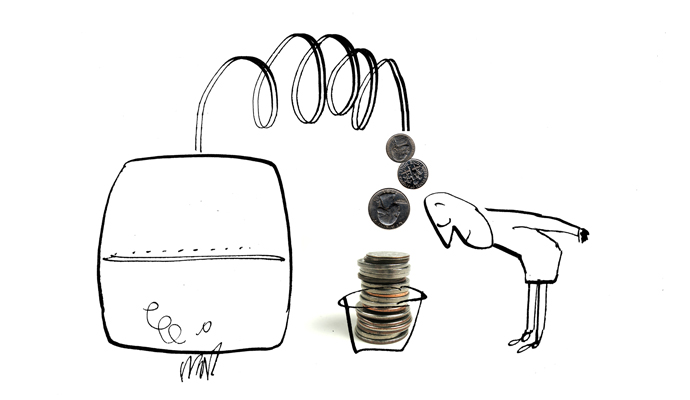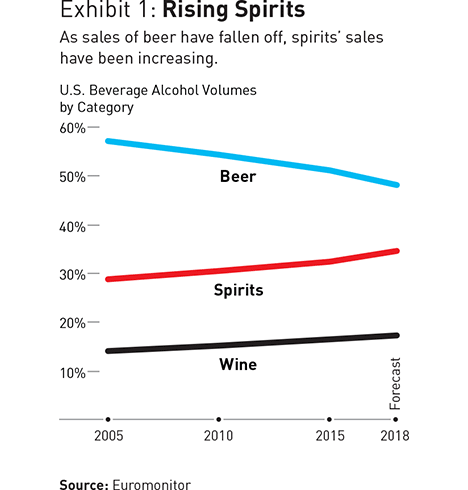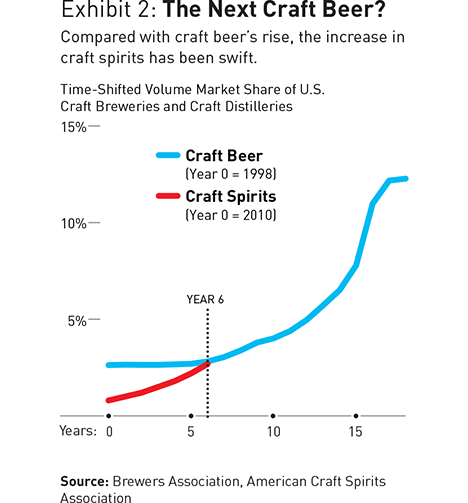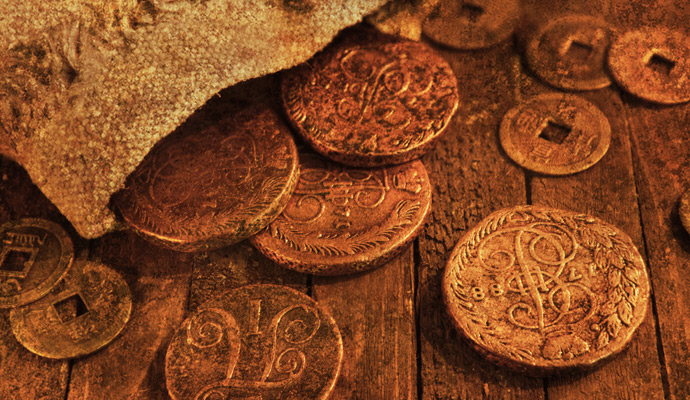In High Spirits
How to capitalize on the boom in craft liquors.
In June 2017, alcohol giant Diageo announced it would pay up to US$1 billion to acquire Casamigos, a tequila company founded several years ago by, among others, actor George Clooney. The next month, the French spirits company Moët Hennessy acquired Woodinville Whiskey Company, a seven-year-old distillery brand based near Seattle.
The deals highlight the potential of a rapidly emerging niche in the consumer products world. Over the past two decades, upstart brands focused on innovative flavors, high-quality ingredients, and the cachet of authenticity have been disrupting some of the biggest segments of the U.S. food and beverage industry. In response to changing consumer tastes, particularly those of millennials, and with the use of modern digital and social media tools, “artisanal” and “craft” startups have garnered significant market share in categories as varied as snacking, chocolate, coffee, and beer. Now, this revolution is rolling through one of the oldest branded consumer products segments: spirits.
In recent years, spirits have been accounting for a larger share of alcohol drunk in the United States. Since 2002, spirits’ share of the number of drinks consumed in the U.S. climbed to 34 percent in 2015, with most of the growth coming at the expense of beer (see Exhibit 1).
Within the spirits segment, the premium tiers have accounted for the lion’s share of growth. And it is here, in the premium segment, where craft whiskeys, vodkas, gins, and other spirits have carved out a leading role. (A 750 ml bottle of Casamigos Tequila Blanco retails for about $45.)
Since 2012, overall spirits volumes in the U.S. have grown at 2 to 3 percent annually. But in the same period, craft distilleries — defined as distilleries where the owners have greater than a 75 percent stake or operational control, and annually produce fewer than 315,000 nine-liter cases of 100-proof spirits — have posted 28 percent annual growth in volume.
Considering the growth trends in other craft segments, and what we know about changing demographics and consumer preferences, there’s strong reason to believe that the growth of craft spirits is set to accelerate. Major alcohol players such as Pernod Ricard and Constellation Brands have been acquiring craft distillers, and M&A in this category is expected to remain very active over the next several years.
But larger spirits players seeking to capture growth in this segment will need to make the right set of acquisitions. This will require a clear-eyed view of the market and consumer dynamics at play and a well-designed plan for growth and capability development, including an appreciation for how craft brands will be managed as part of their broader spirits portfolio.
The Next Craft Phenomenon
Comparing the growth of craft spirits to that of craft beer is instructive. Craft beers first made inroads into the U.S. market in the late 1980s, took off in the 1990s, and rocketed in the 2000s. Today the 5,000-odd craft breweries in the U.S. — including titans such as Sierra Nevada and smaller shops such as Two Brothers Brewing — account for 13 percent of the beer market.
The craft spirits market is experiencing a steeper growth curve today in its infancy than craft beer did in its early days. Some 1,300 craft distillers collectively hold down a 2.2 percent (by volume) share of the overall spirits market. But this figure is up sharply from 0.8 percent just five years ago. If they were to follow the trajectory of craft beers, craft spirits could gain an additional 10 percentage points of volume share in the coming decade (see Exhibit 2).
The market’s expectations are accordingly high. In 2016, craft distillers sold 4.9 million nine-liter cases. By 2020, however, volumes are expected to grow to 25.6 million cases, which represents an impressive annual growth rate of about 40 percent.
Deals activity in craft spirits is also accelerating much faster than was the case in the early stages of the craft beer market. Back then, major brewers erred in ignoring the craft beer phenomenon as a real market force. But it seems that the large spirits players have quickly recognized the threat — and the opportunity — craft spirits pose.
Demand is driven by a growing share of young drinkers with high disposable incomes who are willing to spend a few extra dollars to trade up to on-trend craft liquors such as Hendrick’s Gin and Tito’s Vodka, even when ordering standard mixed drinks such as gin and tonics or vodka martinis. These consumers have little loyalty to established brands such as Bombay Sapphire and Smirnoff, and instead want to explore options that they see as imbued with originality and a unique identity.
Some large players have tried to tap into the zeitgeist by extending an existing brand through flavor innovations or by launching a premium iteration of a familiar brand. One example is Jim Beam’s Double Oak line. Most such attempts have seen limited success.
Other major players realize they need brands with the “craft halo” in their portfolios to build credibility with consumers. As a result, they have been looking for inorganic opportunities. And as they see the market developing, acquirers are looking at smaller and smaller targets and are moving quickly.
For their part, small craft players are seeking to win shelf space and scale their operations. Only a few outfits have the ability to do this independently, given the constraints in distribution and the heavy investments required in sales and marketing capabilities. More than 90 percent of U.S. craft distillers each produce fewer than 50,000 nine-liter cases annually. (The top 2 percent of craft distillers, in fact, account for 50 to 60 percent of total craft spirits volumes.)
Craft distillery owners realize that selling to — or collaborating with — a major player offers significant distribution benefits: connecting them to a wider network, helping them win shelf space in bars and restaurants, and gaining brand support through their partner’s marketing muscle. For proud founder–owners, such partnerships are increasingly seen as being pivotal in helping secure the long-term health of the business they have created.
Complexities of Acquisitions
As smaller distillers continue to get bigger and better, and wholesalers toy with picking up smaller brands for distribution, larger players are realizing the importance of acting swiftly. M&A activity is quickening, and the valuations of craft players, which are already quite potent at about $1,000 per nine-liter case produced annually, are likely to become even headier. Some deals, such as Constellation’s acquisition of Utah-based whiskey producer High West Distillery, were concluded at almost twice that level.
The craft spirits market is experiencing a steeper growth curve today in its infancy than craft beer did in its early days.
In this environment, larger players looking to make acquisitions need to have a clear view of the entire landscape of potential targets. The market is still young, with several pockets of significant opportunity, along with different investment plays available to capture them. But large spirits players cannot simply attempt to buy any premium brand with a stylish label and nice heritage that fills a gap in their portfolio.
Rather, it’s vital that they understand the myriad complexities that characterize the craft spirits segment. As established players assess whether a target can fulfill their strategic objectives, they should ask themselves the following six key questions.
1. Does the target craft distiller’s brand have cachet? The most important factor in determining the long-term success of a craft brand is the quality of the product itself. Strong brand cachet — a pillar of a successful craft brand — is built by perceptions and the experiences of the everyday consumer, and is supported by critics’ awards at industry competitions.
2. Are the right marketing capabilities in place? Building brand appeal requires effective grassroots marketing capabilities. Marketing can be approached in different ways. Some brands, such as Ketel One, have deepened relationships and performance at key restaurants and bars by converting local bartenders into brand ambassadors. Others have tapped into the interests and concerns of their demographic. Examples include Bacardi’s partnership with Spotify to create a mobile music app and Jack Daniel’s election-themed ad campaigns. Smaller craft players have found that providing unique tasting experiences at their distilleries (where about 25 percent of their sales occur) has been an important tool. High West, for instance, launched its distillery on a Utah ranch that includes a luxury hotel and spa.
3. What is the product mix? The renaissance in brown spirits, helped in no small measure by the popularity of the show Mad Men, has seen a raft of new whiskey labels and driven greater premiumization in the category. Indeed, 35 percent of all craft spirits labels are whiskies, followed by gin and vodka at 15 and 12 percent, respectively. However, focusing solely on a stable of whiskies presents supply constraints (because they take longer to age and distill than clear spirits) in adjusting to demand. That is why it is important to take a broad view. A diversified portfolio can help a craft distiller stay afloat, enable it to experiment with new products, and open doors for further growth.
4. What are the production capabilities and constraints? The production capacity available to a craft distiller defines the distiller’s near-term growth potential and has an outsized bearing on valuation. As larger players look at ever-smaller targets, they must grasp the extent of these targets’ unused production capacity and the ability of their existing infrastructure to support expansion. Understanding the potential of the organization to support growth is a critical lever in gauging the extent to which a proposed acquisition can make a difference.
5. What is the post-acquisition growth strategy? Acquirers will need to have a well-reasoned growth plan, mapped out by state or region. Currently, just five states — California, New York, Washington, Colorado, and Texas — account for a third of all distilleries. The next five biggest players — Oregon, Pennsylvania, North Carolina, Ohio, and Florida — make up another 15 percent. Thus, roughly half of all craft distilleries in the country are located in just 10 states. The realities of brand recognition, and the peculiarities of distributor relationships, mean that more than two-thirds of craft distillers’ volumes are sold within their home states. For a large acquirer, this presents a significant opportunity to bring the brand to a wider audience. But doing so will require a deep appreciation for consumer preferences and brand recognition across state lines, a plan to weave the brands into existing distribution networks, and a grasp of the tax and regulatory implications.
6. How will the small brand be managed as part of the broader portfolio? Perhaps the biggest consideration in planning for future growth is to maintain the cachet of the original craft brand. Many buyers let a craft player run on its own after an acquisition and simply provide some capital and distribution to fuel growth. This typically suggests that the craft player’s founder or CEO remains on board, and that the buyer minimizes intervention in operations. However, a large acquirer can also selectively provide other capabilities where scale is important — for example, in ensuring the stability of raw materials supply, driving down the price of ingredients, and providing access to relationships with marketing agencies and its network of distributors.
A Proactive Stance
Successfully acquiring and managing craft distilleries requires tailored and reasoned strategies as well as a unique set of organizational capabilities. Large spirits players seeking to enter the craft spirits space or further bolster their craft spirits portfolios will need to be both proactive and thoughtful about identifying viable opportunities, while developing a focus on extending the growth trajectory of their acquisitions.
Continuously gauging the evolving craft spirits landscape and sharpening their understanding of the dynamics underpinning the market will enable large players to make smart, strategically relevant acquisitions while avoiding overspending on unsuitable targets.
Reprint No. 17301
Author profiles:
- Akshat Dubey is a leading practitioner on the U.S. deals strategy team in the retail and consumer sector at Strategy&, PwC’s strategy consulting business. Based in Cleveland, he is a principal with PwC US and works with clients on issues relating to organic growth and M&A.
- Rakesh Mani works with clients in the retail and consumer sector as a member of the U.S. deals strategy team at Strategy&. Based in Chicago, he is a director with PwC US.





